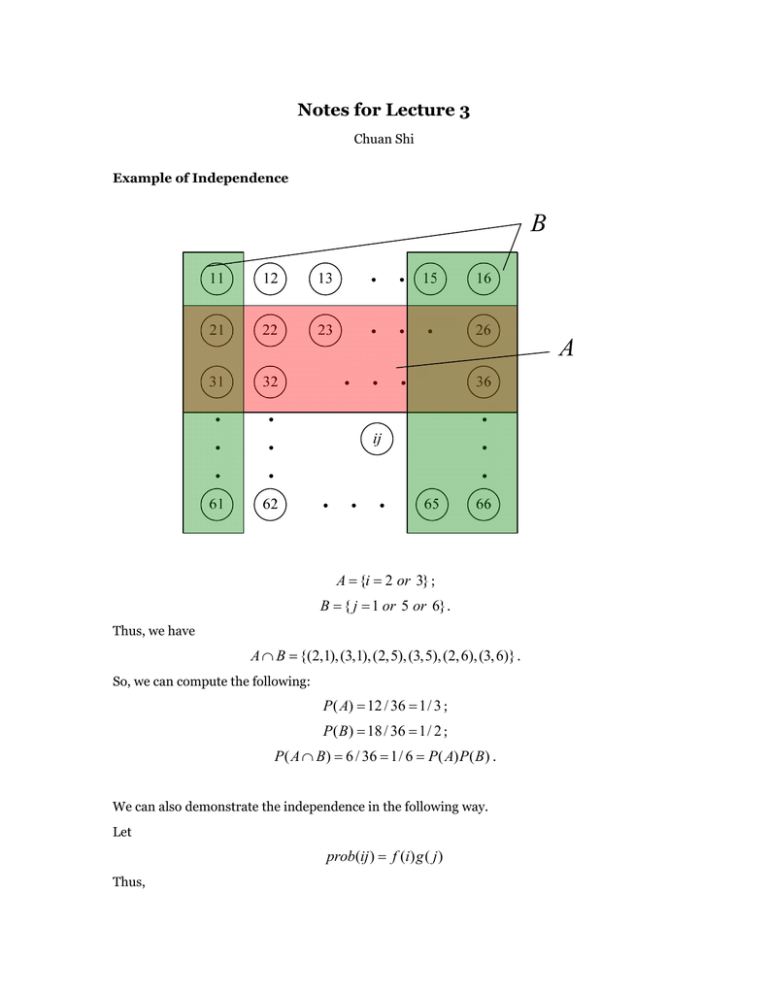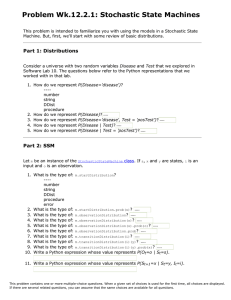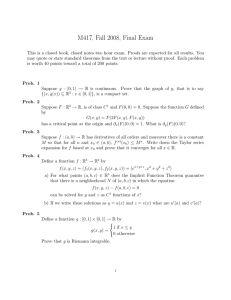Document 13446088
advertisement

Notes for Lecture 3
Chuan Shi
Example of Independence
A = {i = 2 or 3} ;
B = { j = 1 or 5 or 6} .
Thus, we have
A ∩ B = {(2,1), (3,1), (2,5), (3,5), (2, 6), (3, 6)} .
So, we can compute the following:
P ( A) = 12 / 36 = 1/ 3 ;
P ( B) = 18 / 36 = 1/ 2 ; P ( A ∩ B) = 6 / 36 = 1/ 6 = P( A) P ( B) .
We can also demonstrate the independence in the following way.
Let
prob(ij ) = f (i ) g ( j )
Thus,
prob( A) = f (2) g (1) + f (2) g (2) + " + f (2) g (6)
+ f (3) g (1) + f (3) g (2) + " + f (3) g (6)
= ( f (2) + f (3))( g (1) + g(2) + " + g(6))
Similarly, we have
prob( B) = ( g (1) + g(5) + g(6))( f (1) + f (2) + " + f (6))
And
prob( A ∩ B) = f (2) g (1) + f (3) g (1) + f (2) g (5) + f (3) g (5) + f (2) g (6) + f (3) g (6)
Note that
f (1) + f (2) + " + f (6) = 1
And
g (1) + g(2) + " + g(6) = 1
Therefore,
prob( A) = f (2) + f (3)
prob( B) = g(1) + g(5) + g(6)
Thus,
prob( A) prob( B) = ( f (2) + f (3))( g (1) + g(5) + g(6))
= f (2) g (1) + f (3) g (1) + f (2) g (5) + f (3) g (5) + f (2) g (6) + f (3) g (6)
= prob( A ∩ B)
So, A and B are independent.
MIT OpenCourseWare
http://ocw.mit.edu
2.854 / 2.853 Introduction to Manufacturing Systems
Fall 2010
For information about citing these materials or our Terms of Use, visit: http://ocw.mit.edu/terms.









